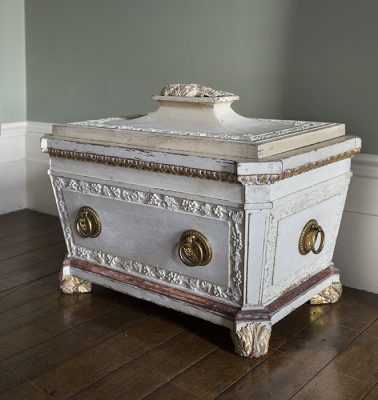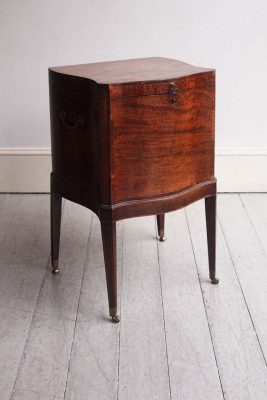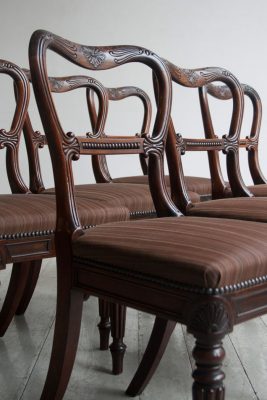
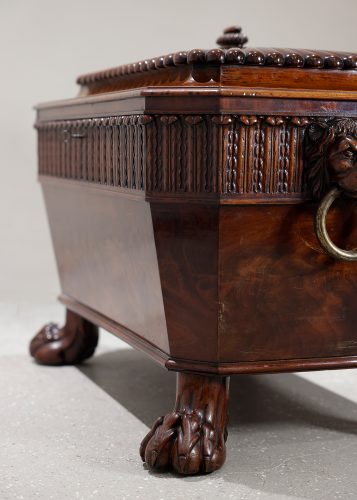
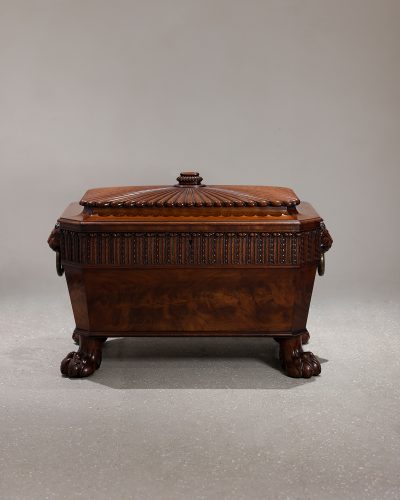


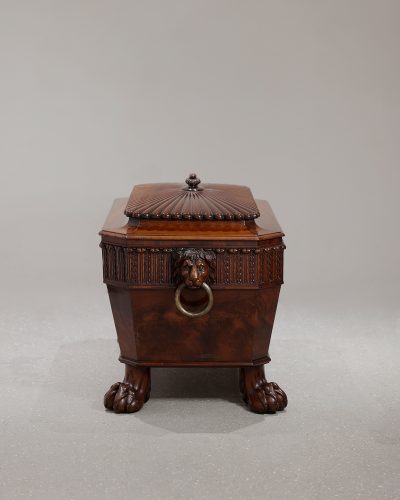

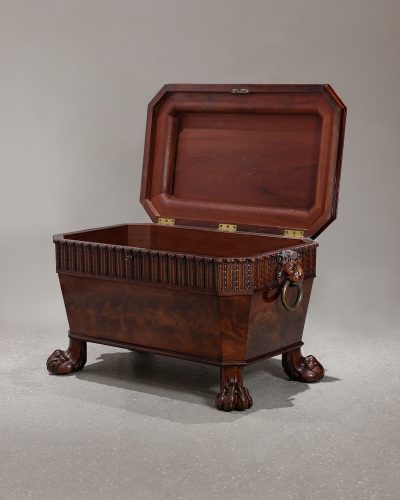
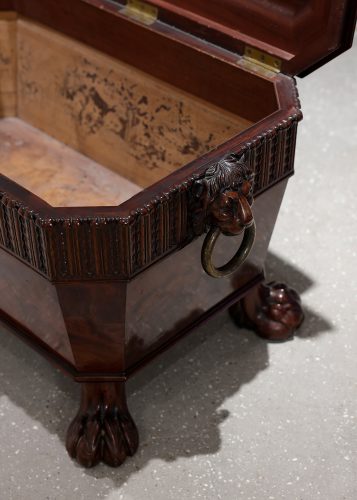

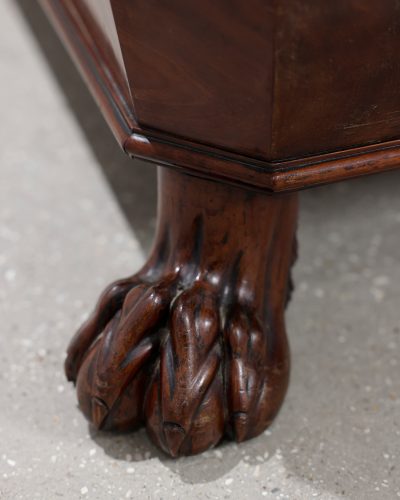

A Rare Late C18th Cellarette by Gillows of Lancaster
An exceptional and rare late 18th Century Regency mahogany cellarette by Gillows of Lancaster, of sarcophagus form with a stepped hinged lid with boldly carved decoration throughout, the lid featuring a raised central panel, with a radial gadrooned design centred with a carved oval handle with conforming gadrooned carving, over an intricately carved feather border, each end with a magnificent lion’s mask clenching an ormolu ring-handle, the tapering sides with canted corners, supported on four hairy lion’s paw feet raised on original, concealed brass castors. In perfect original condition, however the lead liner now missing, stamped GILLOWS LANCASTER, English, circa 1795
Cellarettes, small and portable cases or miniature cellars designed to hold wine, they were first referenced as early as 1690 by Gerreit Jensen, the Royal cabinetmaker for King William III and Queen Mary. However, they did not become popular until the early 18th century, during the Georgian era. A period of opulence and splendour, it was during this time that the aristocracy began to embrace the trend of having a separate dining room.
Primarily to keep wine at the ideal serving temperature and mostly made of mahogany. Cellarettes were designed for ease of access. Dinner was more than just a meal; it became a meticulously orchestrated occasion of indulgence. Before a dinner party, servants would fill them with wine from the cellar. Often placed beneath a sideboard or side table, these cabinets were rolled out during social gatherings. Their historical importance comes from their blend of practical use and decorative design, making them a common feature in affluent households.
The lead lining inside the cabinet was a practical feature. It was designed to protect the bottles and keep a cool environment for the spirits. This lining prevented moisture damage and ensured the longevity of the stored wine.
Dimensions
Height: 610mm / 24"Width: 900mm / 35 ½"
Depth: 510mm / 20"
